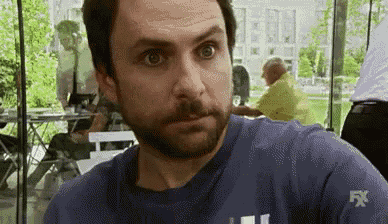Bitmap Frogs
Mr. Community
That was it?
They're going to upload the high res full-color tomorrow on NASA's site.I'm sure they'll post high res shortly.

This livestream was a waste of time. They should've just shared the high-resolution image and called it a day.
So they just re-took the deep field image...?

God damnit, thinking about space fucks me up. Shit's beyond massive. Unfathomable.
God damnit, thinking about space fucks me up. Shit's beyond massive. Unfathomable.
God damnit, thinking about space fucks me up. Shit's beyond massive. Unfathomable.


Some people are like "ThAtS iT?" My brother in christ LOOK AT THE IMAGE. IT'S WONDERUS AND ENDLESSELY BEAUTIFUL. Space is so fucking cool, man. I often wish I was born a few hundred years later so I could see it up close.

NASA's James Webb Space Telescope has produced the deepest and sharpest infrared image of the distant universe to date. Known as Webb's First Deep Field, this image of galaxy cluster SMACS 0723 is overflowing with detail.
Thousands of galaxies – including the faintest objects ever observed in the infrared – have appeared in Webb's view for the first time. This slice of the vast universe is approximately the size of a grain of sand held at arm's length by someone on the ground.
This deep field, taken by Webb's Near-Infrared Camera (NIRCam), is a composite made from images at different wavelengths, totaling 12.5 hours – achieving depths at infrared wavelengths beyond the Hubble Space Telescope's deepest fields, which took weeks.
The image shows the galaxy cluster SMACS 0723 as it appeared 4.6 billion years ago. The combined mass of this galaxy cluster acts as a gravitational lens, magnifying much more distant galaxies behind it. Webb's NIRCam has brought those distant galaxies into sharp focus – they have tiny, faint structures that have never been seen before, including star clusters and diffuse features. Researchers will soon begin to learn more about the galaxies' masses, ages, histories, and compositions, as Webb seeks the earliest galaxies in the universe.
Exoplanets are small, very far away, and not very bright. We have to spot them through indirect means.Can they zoom in on actual planets with these telescopes?
Exoplanets are small, very far away, and not very bright. We have to spot them through indirect means.
it is looking back in time right?

Thanks mateHere's where you can view all the full-res pics as they're posted tomorrow https://webbtelescope.org/news/first-images
Here's the full res PNG of today's photo, 4537x4630, 28.51MB. It's maddeningly beautiful.
Can they zoom in on actual planets with these telescopes?
Incredible
Been looking at that for 20 minutes.Here's where you can view all the full-res pics as they're posted tomorrow https://webbtelescope.org/news/first-images
Here's the full res PNG of today's photo, 4537x4630, 28.51MB. It's maddeningly beautiful.
But they can't zoom in on planets that are far closer?
John Grunsfeld: James Webb is sold as studying galaxies, but I think its greatest discovery may be a habitable Earth-like exoplanet. That's what's going to blow everybody away.
Mullen: So you'd be able to directly image a terrestrial planet, which has never been done before?
Grunsfeld: Exactly. But it wouldn't be like a Rand McNally map, it would be a spot. But because you'd see a spot, we can then do a spectrum of that spot.
Mountain: You'd actually get a color. If it's like Earth, it'll look blue.
Grunsfeld: And, if you had enough time, and there were seasons, with ice covering and then going away, you could study it and be able to tell the difference between winter and summer on the planet, or vegetation, in principle. Just from unresolved single pixels, because of the color changes.
Mountain: Or you could tell it is rotating.
Mullen: Is there a limit to the kinds of stars JWST can target for planet searches?
Mountain: You can only look at stars out to a certain distance, to about 10 or 20 parsecs. But that's ok, because the planets [farther out] are too faint anyway. Any farther away and we can't differentiate them, both the planet and the star will be hidden by the star shade.
But what if they left Webb's shutters open for a few weeks like they did with Hubble.Been looking at that for 20 minutes.
Text says it all though. JWST did this in 12,5 hours where Hubble needed Weeks and still couldn't observe certain wavelengths. (One could argue that JWST is about 30times better at least then Hubble)
JWST work is just beginning, I'll be glad to see more of its work in the future.
And we probably will. Though I wouldn't expect it to soon. As for now scientists/teams from all over the world are fighting to get time for even small projects/shots.But what if they left Webb's shutters open for a few weeks like they did with Hubble.
I bet we will see some shit with a Webb Ultra Deep Field.
no they are newit is looking back in time right?
There's a mom/daughter exoplanet hunter team looking to get time on Webb to study a few exoplanets. I'm looking forward to what they find.And we probably will. Though I wouldn't expect it to soon. As for now scientists/teams from all over the world are fighting to get time for even small projects/shots.
